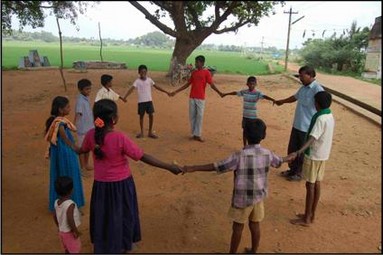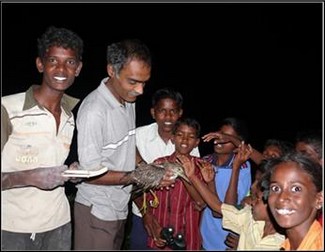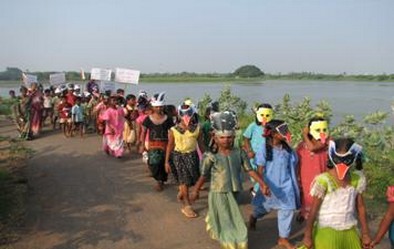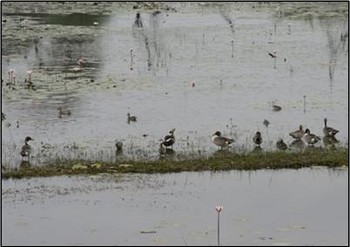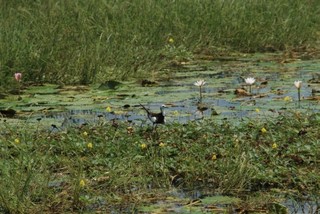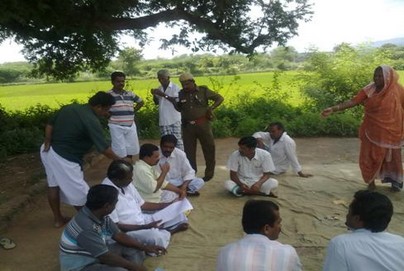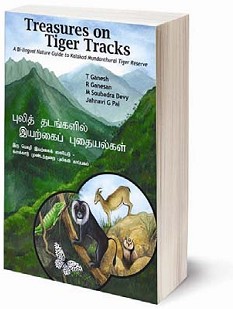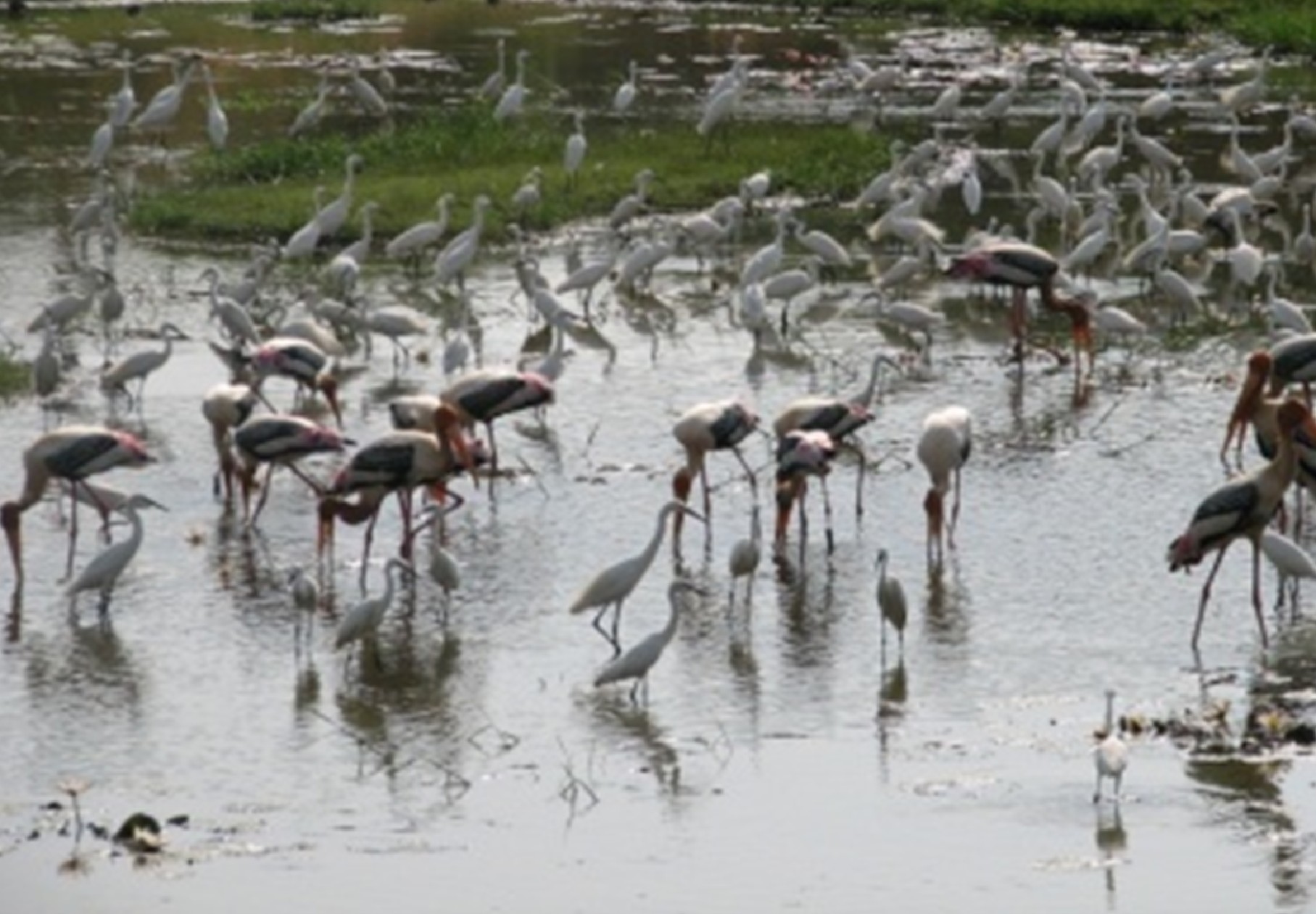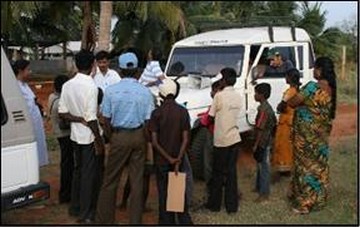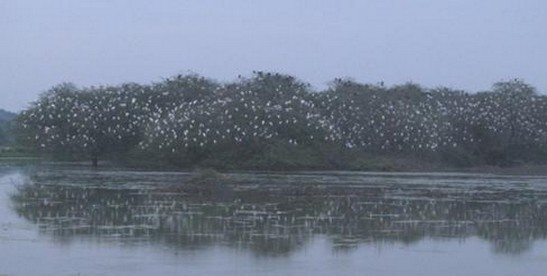Agasthya
A newsletter on the Natural History, Ecology
and Conservation of the Agasthyamalai region, Western Ghats, India.
Bubooo, Buboo
Friends, while I go out on my surveys looking for Owls in the eastern edges of KMTR, a booming, resonating, double-noted “Buboo” call uttered by the Great Horned Owl (Bubo bubo) is always treated with a welcome. This call signifies its presence in the vicinity, and lets us know more about its habits.
A routinely designed tryst with these booming calls elicits streamlined thoughts in my mind, but I wonder what it does to the resident. Owls, in many places far and wide, have been stigmatized due to their eerie calls and nocturnal habits. They unknowingly and unfortunately have been the creatures of the darkness for long, more so the darkness signifying mysterious notions about their unknown habits. I can think of at least a dozen other creatures that sound scarier but enjoy poetic and fabulous royalties, possibly because of them being diurnal and conspicuous.
The time seems to have changed slightly in favor of the owls; the current day notions about these owls, say from a pixel packed bright picture have thrown more light on their plight, and is often treated with “so cute”, “wow” etc, thanks to their large eyes and facial discs! So, the slow painful trickle of little bits of information from hunters, forest dwelling communities, naturalists and the accumulated factual pool of information from human history has allowed them to breathe a sigh of relief. A sigh of relief, only in terms of perception, even though the threat to their habitats still looms large and needs broader
inspection.
We had an opportunity to acquaint the local kids to owls through a short survey. The school kids of Nanalkulam, close to Vaagaikulam heronry much used to the chuckling-croaking calls of herons and water birds in their village, got an opportunity to tip-toe to the edge of the forest at dusk, stay-put on boulders overlooking the hills and listened to the owls on a quiet evening !
Leadership in Conservation
This is a special issue on Vaagaikulam, an important heronry discovered by ATREE researchers in 2008 and which
continues to be under threat from the contractor lobby that wants to chop away the trees on which the birds nest and roost. How to conserve this place by involving the Panchayat and other institutions and bring it under a legal frame work of conservation is the point of discussion. The support from the Panchayat is divided because of some members close link to the contractor and a ‘weak’ president who wants to be ‘nice’ to both his men who wants the tree cut and others who oppose the cutting. Things need to change and the president has to show greater leadership for the good of his people, village and the environment. Would that ever happen or is it just wishful
thinking? Many wetlands in the region are threatened and cannot be bracketed in any legal framework of protection but voluntary efforts from some communities, individuals and institutions that are committed to lead initiatives like a protection forum for wetlands needs to be promoted and encouraged.
The long awaited first ever bi-lingual multi-taxa nature guide to KMTR is out. The guide is not restricted to KMTR and can be used in most parts of southern India. A number of copies of the book would be given free to schools and colleges and proceeds from its sale would help in conservation activities in the region. Buy a book now!
Happy reading
T.Ganesh
Vaagaikulam Community Reserve: to be or not to be?
It is almost 2 years since the discovery of the Vaagikulaum heronry by the ATREE field team. The tank bed has only a small stand of Accacia nilotica, a greater portion has been cut. Enormous efforts have gone into seeking the attention of the Forest Department, District Administration and media, besides building the local stewardship. We have been discussing the idea of having Vaagaikulum declared as a Community Reserve (CR) with various stakeholders. Located in an agriculture landscape , there is heavy dependence on the wetland and it is only fair that it be set aside as a CR under the 2003 amendment of WPA. This could serve as a unique example where the community manage a reserve. The birds use the tank only during the months of November to March when water is there and is seldom accessed by the community during this period.
Kids and passion in conservation!
One evening we headed off to the northern part of KMTR, to a place called Nanalkulam; When we got there, I heard an unusual incessant clucking noise, which reminded me of the heronry in the remnant trees inside Vaagaikulam tank. And lo and behold, I spotted more than 25 species birds resident as well as migratory such as the Glossy Ibis and Pelican. Once our jeep stopped near the tank-bund, groups of kids came running towards us, I thought they might be curious, but my assumption was wrong as they came and asked for our binoculars!
I found their enthusiasm and curiosity about the bird’s color and different texture and ability to identify different species by looking at feather colors fascinating .One kid brought an injured Night heron to us, which he had rescued from his field. He had tried to feed it with small fish and water-insect , but it had not eaten. I found his knowledge about the foraging habits of the species and his kindness towards birds exceptional. In fact they do not have any exposure to bird books or any expertise other than a regular dose of the National Geography Channel!
I realized that if we really want to conserve such habitats and the species that reside within, we need local involvement and partnerships to re-kindle passion in conservation of such ‘hidden treasures ‘like Vaagaikulam.
Self evaluating ATREE’s program around Vaagaikulam
I had long since heard about the ‘discovery’ of the heronry in Vaagai Kulam from KMTR team but didn’t get a chance to see the lake until an unscheduled visit to the place. I had to meet Elango with regard to a survey, but he was busy training kids from Nanalkulam for the street play to educate the villagers on the visiting birds. That took me to Nanal Kulam where he was interacting with the children. What I saw was an amazing amount of enthusiasm among the kids. A casual chat with the older villagers revealed a surprisingly friendly attitude towards the birds. That made me curious and I found the details of what ATREE was attempting with the lake. The lakes resources are shared among four villages – Nanalkulam, Veerasamudram, Malik Nagar and Vaagaikulam. ATREE has started engaging villagers with community programs from all villages except Vaagaikulam. Programs targeting Vaagaikulam villagers are to start soon. Household demographics of villagers from Vaagaikulam and Nanalkulam are very similar; both villages are populated by people from the same community. What we had was a set up to self-evaluate the awareness programs. Using the villagers from Vaagaikulam as control, we hope to see if the awareness programs had an impact on the conservation attitude, knowledge of birds and their willingness to pay. We have started collecting data from Vaagaikulam and hope to start analyzing the data in March. It will be interesting to see if the impact shows up in the analysis.
- Allwin Jesudasan
First World Wetland day celebration at Veerasamuthiram
Each year since 1997, government agencies, non-governmental organizations, and groups of citizens at all levels of the community have taken advantage of the opportunity to undertake actions aimed at raising public awareness of wetland values and benefits in general and the Ramsar Convention for protection of wetlands in particular during the World Wetland day on 22 Feb. This year for the first time wetland day had been celebrated at the Vaagaikulam tank. Students from two elementary level schools participated in this event and a walked around the villages accompanied by music. The students wore birds’ masks and were holding placards.
The Block Development Officer (BDO) from Kadayam, Panchayat Union & Panchayat President from Veerasamuthiram and other village chieftains participated as chief guests in this event. Before starting the procession, a talk was given by the ATREE Team about the purpose of celebrating the wetland day. At the end of the talk, the students were asked 10 questions about wetlands and they answered all of them. The students who gave the correct answers were honored by the BDO. The teachers from the schools and villagers appreciated ATREE’s continuous efforts for preserving the tank.
Chilli fields of Singampatti in the background
Photo: Abhisheka Rajagopal
Less ‘phoren’ more ‘local’ birds in Vagikulaum: does it matter?
Sixty three years after independence, we still are obsessed with anything ‘phoren’, even wetlands birds are not spared. The heronry at Vagaikulum is dominated by little egrets and cormorants and dotted with `phoren birds’ (local dialect for migratory birds) such as Pintails, Gargeny teals, Rosy Pastors etc. Recently, one of the field staff of the forest department visited Vaagaikulum at the behest of a top official. After a cursory look at the heronry remarked to his boss on phone ` “one or two phoren birds only sir, rest all local” . On many other occasions from reporters to community members – constantly nag with this question “How many phoren birds madam”? A self-proclaimed expert from the village corrects me saying that painted storks are from Australia, at least, he is passionate about the birds.
No doubt, long distance migratory ‘phoren’ birds need attention, however it is also important to conserve local biodiversity . The services they offer are unmatched. The guano that gets accumulated in the tank is rich in nutrients which is collected after the tank dries up for the fields. The fishes also benefit by feeding on young birds that fall into the water during the breeding season and the income from fishing has gone up after the birds started nesting regularly. Such earnings only go to the Panchayat.
Our survey of 177 wetlands in the buffer zone of KMTR has shown that Vaagaikulum is a major heronry in the region. Birds breeding here maybe populating the other wetlands. There were times when sparrows and weavers were common in these villages and now have become relatively rare. Time has to come to conserve `common nature’ and not just phoren ones, as they too have an important role in the ecosystem.
- Soubadra Devy
The Village Community in Conflict with the ‘Community Reserve’ in Tirunelveli
The conflicts of interests among the elected representatives of a Gram Panchayat (GP) in Tirunelveli district over the issue of cutting down the Karuvel trees that are planted under the Social Forestry scheme make the solidarity of village community very weak and elusive. Veerasamudhram, a Gram Panchayat in the Ambasamudram Taluk consists of three hamlets: Veerasamudhram, Malik Nagar, and Nanalkulam. Tamil speaking Muslims are more in numbers in Malik Nagar and Veerasamudhram. Nanalkulam is a full Dalit hamlet. Few big and large number of small farmers are from Malik Nagar and Veerasamudhram. Dalits of Nanalkulam are mostly marginal farmers. The oral history and documentary evidences show that there were no incidents of major community clashes in the past of the Gram Panchayat. But the difference of opinions started emerging now over the issue of protecting the trees.
When the KMTR team of ATREE brought to the notice the importance of declaring it as a Community Reserve to protect the bird’s habitat to the GP, except for very few individuals and three elected representatives, it got the support of majority villagers. Those who support the idea see no great disadvantages to their agricultural activities. Some of the farmers felt the birds help the crops by removing insect pests.
Plants give a helping hand
While my colleagues were identifying bird with the village children, I was captivated by the frenzied activites of the birds feeding their chicks, chasing stealing crows.
The cacophony of a few Jacanas, diving ducks, cormorants and darters drew my attention to the part of the pond where there were lot of lilies and lotus. The ‘Leggie’ Jaccana was elegantly doing a ramp walk with its slender legs and long toes on the leaves in search of insects among the floating plants. Plants tucked in the beaks of the feeding duck and some blue and yellow flowers prompted me to wade into the knee-deep water to explore plant life. Life was equally diverse in the form of submerged and floating plants in addition to other usual animal life.
A curious elderly villager, having a bath nearby also joined me in my search of plants. Pointing at a plant with blue flower he said it is ‘Kotti’ and its tuber can be boiled and eaten. He had a long list of plants and their parts either used as food or medicine. In the course of conversation I managed to fish out some useful information from the depth of his experience. Then our attention was diverted by a white mat floating among the plant life. It was a corky outgrowth with air chambers around the stem that kept it afloat. Yet another senior villager told me that he uses them as a float in his fishing gear. He also said that the sediment in the pond where this submerged plant occurs in plenty are a preferred manure in the fields where ground nut, cotton and paddy are cultivated. The reason was that these plants being rich in a mucilaginous substance in addition to nutrition, acts as good soil binders and enhances moisture retention capacity of the field. This could be an addition to the list of services provided by the habitat which supports rich bird diversity and it can be used to convince the intolerant villagers towards the winged guests visiting their village pond.
- R Ganesan
Snippets from field
- The Forest department initiated a lantana clearing program within KMTR
- Tiger census was done by the Forest department involving large no. of volunteers in the last week of Feb.
- Seshadri sighted a Dhole, Tiger pug mark and an Oriental Scops Owl in Upper Kodayar, Lesser Fishing Eagle in flight near Manimuthar dam and two striped-neck mongoose at Nalmuk.
- King cobra seen swimming across Neterikal dam on a sunny Feb afternoon.
- An undamaged skeleton of a monkey was found by Seshadri and John on Fernhouse trail on 16-1-10. The monkey seemed to have died of some disease as the bones were intact, the skeletal remains were photo documented and is suspected to be of a Nilgiri langur.
- Prashanth, during a visit to ChinnaManjoli along with Ganesh and Chetan saw two sloth bears walking along a trail; a snipe flying into the evergreen forest patches at Nettrikkal indicating a - Eurasian Woodcock; a Bedome’s Cat Snake in the abandoned Nettrikkal estate bungalow (camp); a White-bellied Sea-Eagle next to the inland Kodumudiaar dam site.
- District Collector passed an order on November 26 banning the use of non recyclable plastic. The ban applies to both shop keepers and consumers, violators fined Rs. 250.
- Keep KMTR clean campaign" - 2010 was conducted in Manimuthar water falls during the Pongal festival, ATREE's Green Brigade students volunteered in this campaign which
is now in its ninth year.
ASHOKA TRUST FOR RESEARCH IN ECOLOGY AND THE ENVIRONMENT
Centre for Excellence in Conservation Science
Royal Enclave,Srirampura,Jakkur Post
Bangalore-560064
Telephone: 080-23635555 (EPABX)
Fax : 080- 23530070
Any and all opinions expressed in this newsletter are solely those of the author(s) and do not reflect the opinion of ATREE.
Editorial Team
Editor: T. Ganesh
Associate editor: Vivek Ramachandran
Editorial Review: R. Ganesan, M. Soubadra Devy
Design and presentation:(print) Jahnavi Pai
(web) Vivek Ramachandran
Mathivannan orienting the kids with “owl-calls” from a speaker before the survey
Photo- T Ganesh
A S H O K A T R U S T F O R R E S E A R C H I N E C O L O G Y A N D T H E E N V I R O N M E N T
'Phoren’ Pintails at Vagaikulum
Photo: T. Ganesh
An exclusive bi-lingual nature guide for KMTR titled ‘Treasures for Tiger Tracks was released on the 5th of March in Tirunelveli. The District Collector Mr. M. Jayaraman released the book in the presence of the Field Director of KMTR Mr A. Ramkumar.
Painted storks in Vaagaikulam
Photo: T Ganesh
Wetland day Procession-Vaagaikulam
Photo: M.Mathivanan
Gram Sabha meeting Veerasamudhram 26 Jan 2010.
Photo: T. Ganesh
A Pheasant-tailed jacana doing a “ramp-walk”
Photo: Samuel Jacob
The wetland does not entail any major management except for leaving the remaining trees uncut. This enables people access to the wetland and birds their nesting and roosting trees in a mutually exclusive manner.
There is overwhelming support from the community except for a few voices of dissent arising from the contractor and few of his accomplices who sit in the village. According to a forest official the costs of trees that remain in the tank is negligible. The contractor has now indulged in negative propaganda, coming with absurd reasons of how bird guano could affect crops and the trees touch electric wires resulting in short circuits. To demonstrate the benefits, we now have students who are examining nutrient enrichment through bird guano. Also solutions for insulating the wires have been suggested, nearest town.
However, many in the village see the CR as having potential for eco-tourism with income to the Panchayat and an opportunity to demand for a bridge over a river that links the village to the nearest town. ATREE in the last two months has facilitated the visit of Conservator of Forests and the Deputy Collector of Tirunelveli. Following this the collector has suspend cutting of trees which is only a temporary solution. The Tamil Nadu Assembly speaker, who is the sitting MLA of the area has also been apprised. Letters have also been dashed to the Forest secretary and PCCF of Tamil Nadu. The Panchayat had passed resolution in support and some educated members in the villages have dashed a memorandum to the Chief Minister of Tamil Nadu.
Declaring this CR particularly in the year of biodiversity can be very special.
- Soubadra Devy
Those who oppose the idea of a CR argue that the trees will bring some revenue to the GP from the local contractor who got the tender to cut the trees. A few are of the opinion that the trees are preventing work of de-siltation in the tank and reducing the water-holding capacity of the tank. But the President of Water User’s Association had rejected this claim by stating that the trees occupies only a small portion of the tank and work of de-siltation can be carried out in other parts of the tank.
The divided opinion among the local communities has started slowly affecting the solidarity of the village community. The division among the elected representatives over this is in fact strengthening the conflicting views and social relationships among the villagers. GP was initially very supportive of ATREE’s initiative to the extent of passing a supportive resolution in the Gram Sabha (dated August 15th 2009). But the President of GP took a unilateral decision and wrote a letter on September 4, 2009 to the Forest Ranger of Social Forestry requesting him to allow the contractor to cut down the trees. As a result the President of the GP never acted upon the earlier resolution of the Gram Sabha. Not everything that we might reasonably expect from a green society can be produced locally. Democracy in general and a decentralized democracy in particular we can not pre-specify any particular out-come. Thus there can never be any guarantee that the democratic procedure like the decision-making at Gram Sabha meeting of GP will produce ecologically benign substance.
- Kannan.T

















